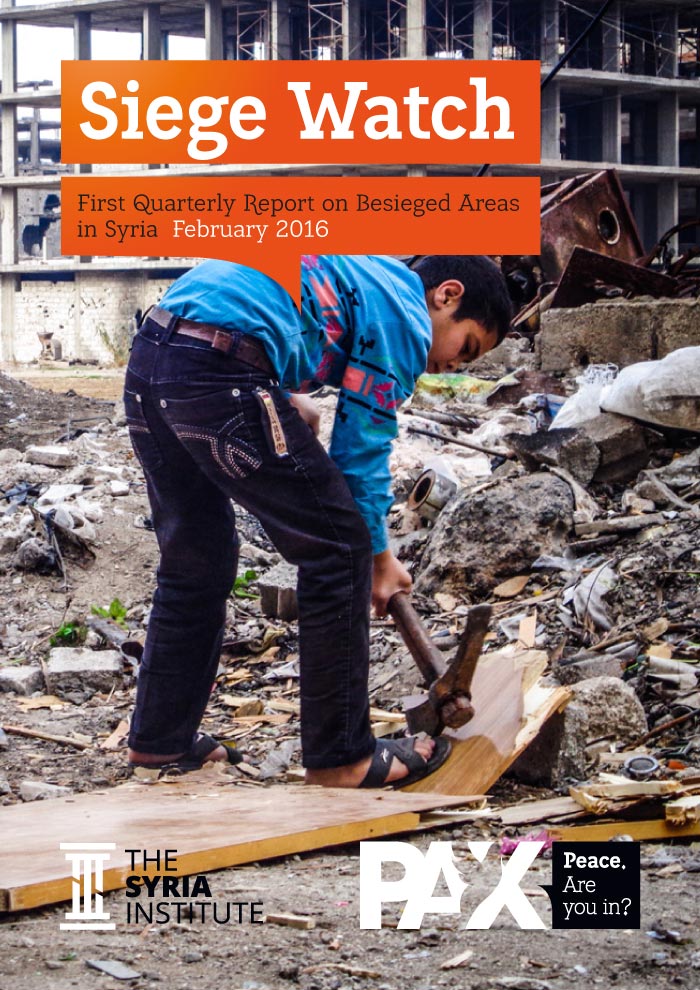In January 2016, the world was horrified to learn of the plight of nearly 40,000 starving residents of the besieged town of Madaya, but Madaya is just the tip of the iceberg. Siege Watch, a joint initiative of The Syria Institute and PAX, has found that over a million people live under siege in Syria, and the Syrian government is responsible for the majority of the sieges. Starvation of civilians is not an uncontrollable collateral effect of the conflict in Syria, but a deliberate decision that violates international humanitarian law. It therefore requires a political response and those responsible must be held accountable.
The Siege Watch project aims to provide the international community with timely and accurate information on conditions in Syria’s besieged communities. New data gathered by Siege Watch shows that there are well over 1,000,000 Syrians under siege in locations in Damascus, Rural Damascus, Homs, Deir Ezzor, and Idlib governorates. The scope and severity of sieges across Syria continues to grow despite United Nations Security Council (UNSC) Resolutions 2139 (2014), 2165 (2014), 2191 (2014), 2254 (2015), and 2258 (2015), all of which call for unobstructed humanitarian access. The deliberate starvation of civilians is also a grave breach of the Fourth Geneva Convention and therefore a war crime.
The scale of the crisis of besieged areas in Syria is far worse than the UN Office for the Coordination of Humanitarian Affairs (UN OCHA) has acknowledged. As of December 2015 they reported that only 393,700 people were trapped under siege in Syria, more than half of whom were besieged by ISIS in Deir Ezzor. Data gathered through Siege Watch’s extensive network of reporting contacts in besieged areas shows that this characterization does not accurately reflect the situation on the ground. The Syrian government and its allies are by far the biggest perpetrators of sieges against Syrian civilians. Out of nearly 50 besieged communities identified, only two – the towns of Fuaa and Kefraya in Idlib province – are besieged by armed opposition groups (AOGs). A third area – a group of neighborhoods in Deir Ezzor city – is besieged by both ISIS and the Syrian government.
UN OCHA’s reporting on humanitarian issues in Syria is important because it is used in the UN Secretary-General’s monthly reports to the UNSC, thereby framing the international community’s understanding of the situation on the ground and, by extension, shaping the urgency and nature of its response. Since this reporting does not acknowledge dozens of besieged communities and dramatically underestimates the number of people living under siege, many remain unaware of the extent of the crisis and the international response has been muted as a result. This was clearly demonstrated in January 2016 when the besieged town of Madaya made international news after photos of its severely emaciated inhabitants began to circulate online. Madaya had not been designated as besieged by UN OCHA, and the Secretary-General’s monthly reports to the UNSC made no mention of the dire humanitarian circumstances there.
Download the report Siege Watch
First Quarterly Report on Besieged Areas in Syria – February 2016




